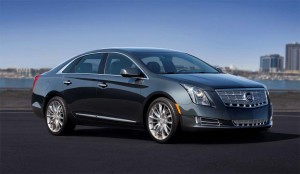The once-explosive pace of growth in the Chinese car market has slowed down sharply this year – which means that General Motors had to wait until November to set a new sales record.
With a month left to run up the final total, GM and its various affiliates have sold 2,593,642 cars, trucks and crossovers in China, compared with 2,547,171 for all of last year. The good news for GM – and its competitors – was that November saw a renewed surge in a market that has, over the past decade, seen sales nearly double in some years.
GM isn’t alone, however, Ford was one of a number of other makers that also reported hitting all-time sales records by the end of November and still more are expected to get there by the time December’s numbers are tallied. On the other hand, key Japanese makers could miss their once-lofty sales goals as a result of ongoing political turmoil.
GM was one of the first foreign makers to set up shop in China. The government requires foreign makers partner with domestic Chinese brands and GM complied by opening a Buick plant in Shanghai co-owned by Shanghai Automotive Industry Consortium, or SAIC.
Since then, GM has expanded into a number of other joint ventures, including a minivan plant in Southern China that markets vehicles under the brand name Wuling.
Meanwhile, GM, SAIC and Wuling have established an entirely new brand, Baojun, which is targeting first-time buyers in central and western regions of China just beginning to feel the benefits of the Asian giant’s rapid economic growth. Baojun has been scoring the sort of growth that was more typical along the Pacific Coast, until recently, sales surging 70% in November.
Collectively, GM has long been the largest manufacturer in China, though it has been battling it out with Volkswagen for leadership this year. Both makers will report new records for 2012.
All of the brands in the broad GM affiliate family made gains last month, including Buick, up 17.4%, Chevrolet, up 15.3, and Cadillac, up 8.4%. The Caddy brand still is saddled with hefty duties on its products which are all imported. But GM plans to sidestep that problem next year with the launch of ATS production in China. Other Cadillac models are expected to follow.
The Chinese market – like the nation’s broader economy – experienced an unanticipated and unfamiliar slowdown earlier in the year and analysts had to revise their forecasts downward, the auto industry now likely to fall short of double-digit growth for the year.
But there are some peculiar factors complicating the situation. Japanese makers have seen a sharp fall-off in demand following an angry dispute over ownership of a group of uninhabited islands in the South China Sea. They were purchased by the Japanese government, which refers to them as the Senkoku, but they are also claimed by China, as the Daioyu Islands.
The dispute sent mobs into the streets and even resulted in the torching of a Toyota dealership and the destruction of many Japanese brand vehicles. An ongoing boycott saw Nissan sales slip 30% in the huge market last month, though that’s an improvement compared to the 41% fall-off in October.
Toyota, meanwhile, has scaled back its forecast for Chinese sales this year, a setback it expects to result in missing its overall global forecast and in a reduction of anticipated earnings.
Industry analysts suggest that bad news for the Japanese could be good news for GM and other major brands which could pick up their own sales and market share as a result.

